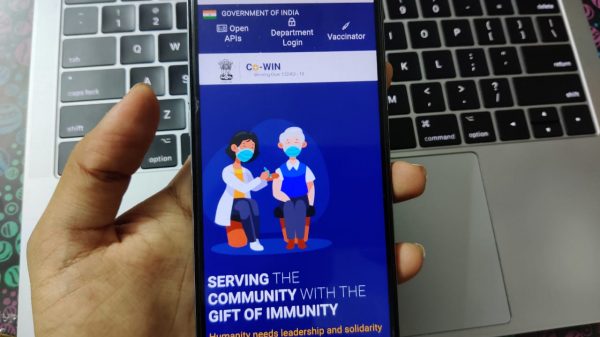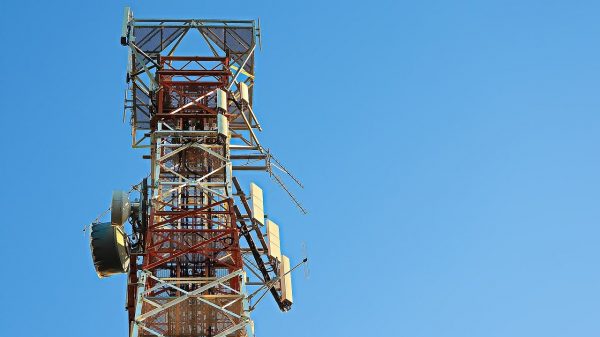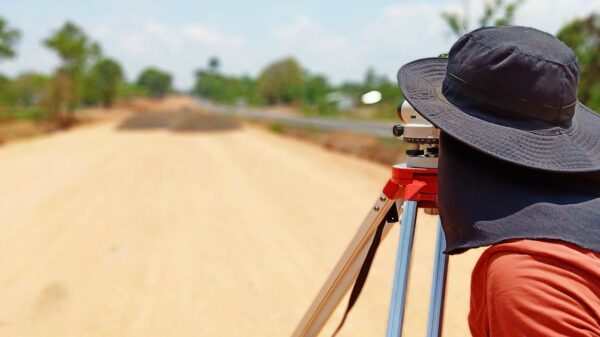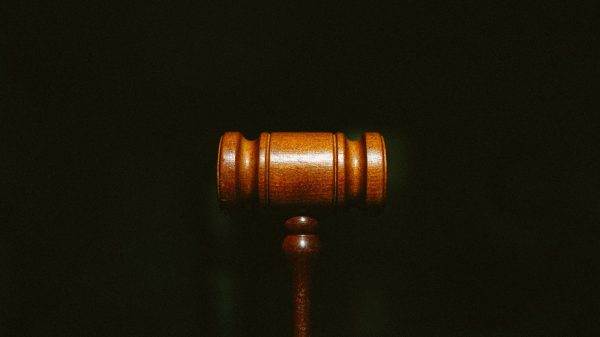In a new and worrisome set of developments, the tender issued by the UP government details what type of drones would be used, how they would work, and who will be surveilled.
This is the second of a four-part series. You can read the first story here.
You are reading it here first: If you thought that the ambit of surveillance for the Lucknow Safe City Project would stop with the installation of facial recognition-equipped cameras and an artificial intelligence-based video analytics framework that would track you if you are in a ‘shadow area’, then you are wrong.
As part of the project, the UP government is also looking to deploy drones in Lucknow with the intention of snooping over terraces and rooftops of Lucknow residents. This potentially privacy-invasive proposal is, on paper, an attempt by the UP government to combat crimes against women.
These proposals are part of a publicly available tender that was floated for selecting a system integrator for the Lucknow Safe City Project. The tender says that 5 drones — 2 small drones and 3 micro-drones, will be deployed in the city. It would act as a last-mile connecting policing equipment for beat cops or emergency surveillance vans, “especially in crowded areas where ground movement is limited by congestion”, the tender said.
Why it matters: Essentially, these proposals mark the UP government’s plans of transforming Lucknow into a police city (as an extension of a Police State). The usage of drones is part of a larger surveillance setup in Lucknow which involves the establishment of a command and control centre where surveillance from all over the city amassed through facial recognition-enabled CCTV cameras, AI-based video analytics, and drones would converge. This command and control centre would be the epicentre of the UP Police’s surveillance measures in Lucknow as part of the Safe City Project.
Drones to surveil protests. But how is it related to Safe City?
These are the other reasons given for the usage of drones —
- “To increase the command area of surveillance by including higher grounds, terraces, rooftops and similar hard to reach places with conventional cameras,” the tender added.
- To provide a high vantage point for quick response during surveillance operations
- “To act as active deterrent to unscrupulous elements during challenging law and order situations like rallies, rasta roko and similar mob/crowd led activities,” the tender also said.
If the Lucknow Safe City Project is solely being brought in to combat crime against women, it is hard to understand what kind of “unscrupulous elements’ the UP government is looking to detect, and why ‘rallies and rasta roko’, which are forms of protests, are going to be surveilled with the help of drones.
It is with this and other similar queries that MediaNama reached out to the Home Secretary of the Uttar Pradesh government, who, according to the Union Ministry of Home Affairs website is the nodal officer for the project in Lucknow. On August 16, we also reached out to the UP Police PRO and Neera Rawat, the Additional Director General of Police in the Women Power Line 1090 section of the UP Police, who is spearheading the project in the UP police department. We were later told by those in her office that she won’t speak to us. [We have attached our queries regarding this at the end of the report]
Dear Reader,
MediaNama’s work of covering the key policy themes that are shaping the future of the Indian Internet is made possible by support from its subscribers. If developments in technology policy are key to you or your organisation, we urge you to subscribe to MediaNama to support our journalism.
Please subscribe here.
Can be used to crack down on dissenters: Experts
While responding to a question on whether there could be risks to the privacy of an individual due to surveillance on rooftops and terraces using drones, Prashant Sugathan, Legal Director at Software Freedom Law Center said, “Certainly. This would be invading on private spaces of offices, residences etc. In addition to this, it could lead to systematic harassment of activists and other dissenters by law enforcement agencies.”
Usage of drone, indeed, extends the capabilities of agencies. Although, however unequivocal the language of tender might be as regards to checks and balances, there is always a risk of compromise of privacy. Further, ‘law and order situation’ is a, rather, open-ended term which may come to encompass anything and everything, when required. How the situation unfolds, only time will tell — Siddharth Jain, co-founding partner at PSL Advocates & Solicitors
Police forces are well within their rights to use drones for surveillance, after all, satellite imagery is also very accurate and can have a ground resolution of less than a metre. UP Police’s plan to augment its local surveillance and deterrence capability is a welcome move from a common citizen’s point of view. It is hoped that this will lead to better policing. This also attests to our expectations that drones can have multifarious usage and can have a transformational impact in many areas they are used in. However, we must not take our eyes of the potential abuse of drones by the police to invade individual privacy beyond the reasonable requirements for surveillance. Misuse of powers by the police is not an unknown phenomenon — Manavendra Prasad, director of operations at Av Tech Forum of India (ATFI), an industry organisation
How would the drones work?
Micro-drones: The tender said these drones will help extend the reach of surveillance vans and mobile units. “Moreover, the micro class of drones have minimal training and licensing requirement for their operations, almost all police personnel operating the mobile units/surveillance vans in rotating shifts can be easily trained to operate these drones,” the tender said.
Small drones: These particular drones, the tender said, are meant to be operated over a larger area for continuous surveillance/loitering missions.
Other specific requirements in the tender for the deployment of drones are —
- Drones should be capable of operating at night with high zoom capabilities
- Material recorded through the drones should be directly relayed to a ground control station and a mobile van
- The connectivity between the drone and ground control should not be dependent on a cellular network or other public infrastructure.
- There should also be fail-safe features to deal with situations like loss of connectivity, low power, and so on.
Exemptions to Home Ministry and introduction of draft drone rules
This proposal comes months after the Indian government issued a conditional exemption from the Unmanned Aircraft System (UAS) Rules, 2021 to the Ministry of Home Affairs and the police departments of various state governments. Essentially, it meant that the MHA and various police departments will be the designated authority for granting permissions and exemptions to its entities regarding drone operations.
Experts back then had highlighted that this move may increase drone surveillance. Apurva Singh, a volunteer counsel at SFLC had said, “With the MHA being the designated authority to grant permissions, there is a possibility that we can see an increase in drone surveillance, especially because now police departments or MHA’s departments do not have to adhere to procedural safeguards in the Drone Rules, 2021. This step will also bypass the requirement of reliance on other lesser intrusive means.”
In July this year, a few weeks after drones were suspected to have been used in an attack on an Indian Air Force base in Jammu Airport, the Ministry of Civil Aviation proposed to scrap the UAS Rules 2021 and introduced the draft of the Drone Rules 2021. Unlike the UAS Rules 2021, the Drone Rules 2021 abolishes various norms and regulations in a bid to promote the drone industry. However, as many legal experts had pointed out, it does not address privacy concerns like the soon-to-be-replaced UAS Rules. (It is important to note that the UAS Rules, 2021 is still in force as of this date)
Namita Vishwanath, a partner at IndusLaw had pointed out that unlike the Drone Rules 2021, under the UAS Rules 2021, there was a specific obligation on authorised unmanned aircraft system operators to ensure the privacy of a person and its property during the operation of drones, including in relation to imagery or data capturing.
UP Government wants to own drones to be exempted from Rules
To avoid hassles in terms of permissions from the Directorate General of Civil Aviation (DGCA), the UP government in the tender recommended that the system integrator should procure the drones on an ownership basis with the UP Police department.
“Ownership of drones by police department will likely facilitate easier permissions process by DGCA through their Digital Sky platform. Moreover, police force may also apply for an exemption from certain clauses of civil aviation requirements (CAR), which will not be available to any other entity in case drones are procured on lease /service model basis. Lease model will not be suitable for operational readiness as well as DGCA exemptions,” the tender said.
What we asked UP government regarding usage of drones
The usage of drones has also been proposed in the tender to provide last-mile extension capabilities for beat or emergency vans. However, another aim of introducing drones, the tender says, is to “to increase the command area of surveillance by including higher grounds, terraces, rooftops and similar hard to reach places with conventional cameras.”
- The inclusion of terraces and rooftops indicates that private properties too are going to be under drone surveillance. How do you address the privacy concerns that arise from this?
Also read
- Lucknow Safe City Project: Uttar Pradesh to deploy facial recognition, ‘label’ faces of suspects
- Exclusive: Indian Army acquiring AI-equipped high altitude UAVs and swarm drones for attack operations
- Summary: Draft Drone Rules 2021 abolishes several norms, focuses on industry promotion
Update, August 20, 7.20 pm: Added the question that we asked UP government regarding the usage of drones
Have something to add? Subscribe to MediaNama here and post your comment.























You must be logged in to post a comment Login